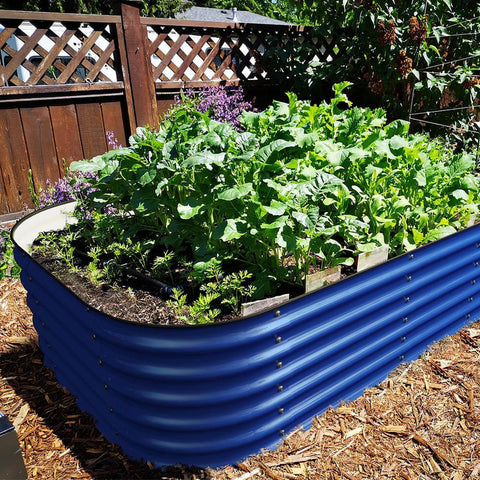How to Grow Foxgloves in Raised Garden Beds
Raised garden beds are a fantastic way to cultivate a variety of plants, including the charming and elegant foxgloves. These tall, bell-shaped flowers add a touch of beauty and whimsy to any garden. In this article, we will explore the steps and tips for successfully growing foxgloves in raised garden beds.
1.Choosing the Right Location:
Selecting the appropriate location for your raised garden bed is crucial for the healthy growth of foxgloves. Foxgloves prefer partial shade or filtered sunlight, so find a spot that receives a few hours of direct sunlight each day. Avoid areas with strong winds that can damage the delicate stems of the plants.
2.Preparing the Soil:
Foxgloves thrive in well-draining soil with a slightly acidic to neutral pH level. Before planting, prepare the soil in your raised garden bed by removing any weeds or debris. Add organic matter, such as compost or well-rotted manure, to improve soil fertility and drainage. Incorporate the amendments thoroughly into the soil.
3.Planting Foxglove Seeds or Seedlings:
There are two main ways to start foxgloves in raised garden beds: from seeds or seedlings. If using seeds, sow them directly into the soil in early spring or late summer, as they require a cold stratification period for successful germination. Alternatively, you can start foxglove seeds indoors and transplant the seedlings into your raised garden bed after the last frost.
If you prefer seedlings, purchase healthy foxglove plants from a reputable nursery or start them from seeds indoors a few weeks before the last frost. Dig a hole in your raised bed that is slightly larger than the root ball of the seedling, gently place the plant into the hole, and backfill with soil. Space the foxglove plants about 1 to 2 feet apart to allow for adequate air circulation.
1.Watering and Mulching:
Proper watering is essential for the growth of foxgloves. Keep the soil consistently moist but not waterlogged. Check the moisture level by inserting your finger into the soil; if it feels dry at a depth of 1 inch, it's time to water. Use a watering can or a gentle spray nozzle to avoid disturbing the delicate foliage.
Mulching around the base of the foxgloves will help retain soil moisture and suppress weed growth. Apply a layer of organic mulch, such as wood chips or straw, but ensure that it does not touch the plant's stem to prevent rotting.
1.Supporting Tall Stems:
Foxgloves can reach impressive heights, sometimes reaching up to 6 feet. To support their tall stems and prevent them from toppling over in strong winds, consider staking or caging the plants. Insert stakes or place cages around the foxgloves early in the season to provide support as they grow.
2.Pruning and Deadheading:
To encourage continuous blooming and prevent the formation of seeds, it is essential to deadhead the faded flowers regularly. Remove the spent blossoms by cutting the stalks back to the base of the plant. Additionally, you can trim back the entire stem after blooming to promote new growth and prevent self-seeding.
Growing foxgloves in raised garden beds can be a rewarding experience. By providing the right growing conditions, including partial shade, well-draining soil, and proper care, you can enjoy the majestic beauty of these tall, bell-shaped flowers. Follow the steps outlined in this article to create a stunning display of foxgloves in your raised garden beds and add a touch of enchantment to your outdoor space.


